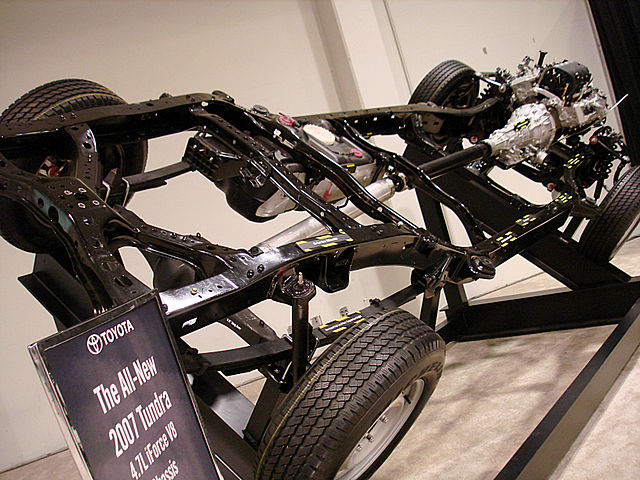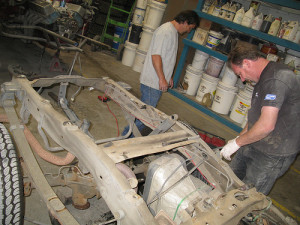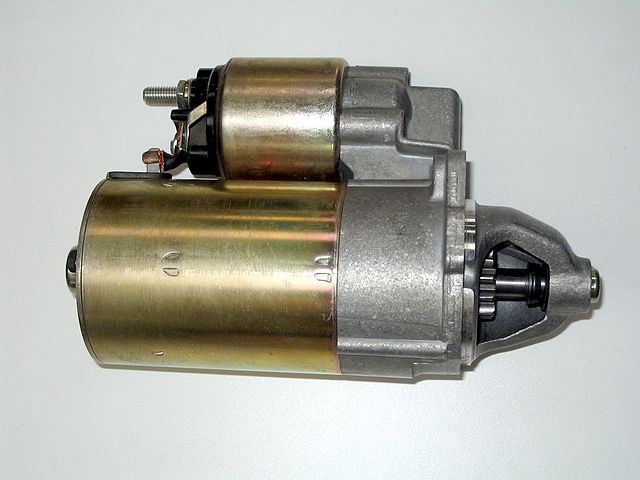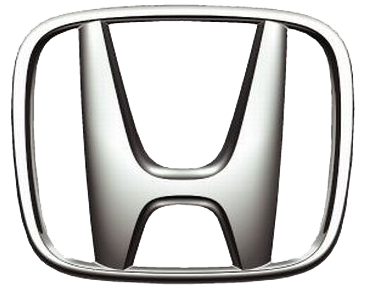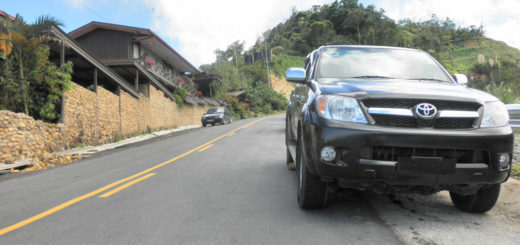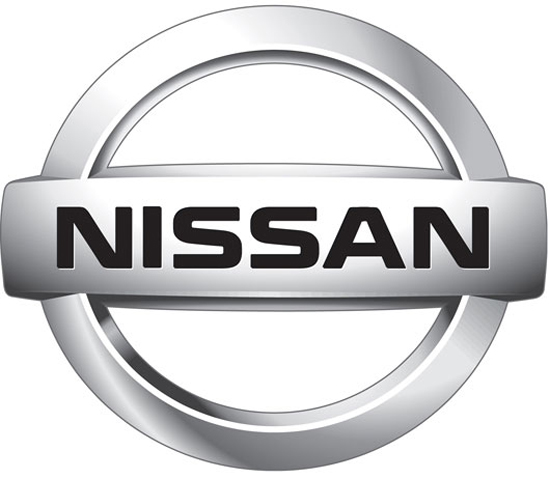What is Body-on-Frame Construction?
In the automotive industry, body-on-frame is the construction method that involves attaching the vehicle body to a frame that forms the support system for the powertrain, suspension, and other components. This construction method dates back to the very first automobiles, which were actually built on wooden support frames. The practice of attaching bodies to wooden frames persisted for several decades, although wood had largely been supplanted by steel by the 1930s. Today, body-on-frame construction has largely been replaced by monocoque, semi-monocoque, and unibody designes. The major exception to this trend is seen in the designs of trucks, where body-on-frame construction is still popular.
Contents
History of Body-on-Frame Construction
The history of body-on-frame construction is older than automotive history itself. This construction method actually dates back to carriage building, which is understandable since early “horseless carriage” automobiles actually looked a whole lot like the horse-drawn carriages of the day. When the first automobile designers were tinkering with their machines in barns and backyard sheds, they went with what they knew: wooden frames with wooden bodies mounted on them.
Early body-on-frame designs used what is known as a ladder frame, which looks just the way it sounds. These frames are built on two main parallel beams that are connected by crossmembers. The body sits on top of the frame, the powertrain is supported on it, and it, in turn, rests on the suspension and wheels.
When steel was first used in body-on-frame construction, these ladder frames were still the only design in use. Later frame types and design styles include:
- backbone tube
- perimeter frame
- c-shape
- boxed hat
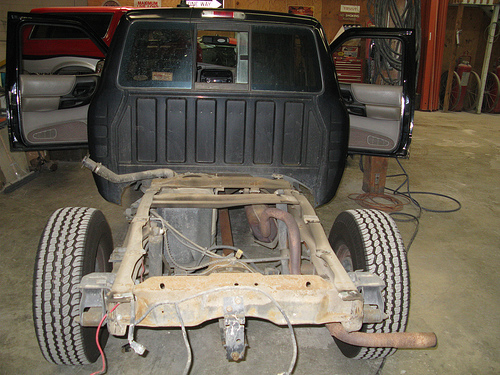
With the bed removed, it is easier to see how the body of this Ford Ranger sits on top of the frame.
Monocoque and semi-monocoque construction techniques appeared fairly early on, although they failed to gain much traction until the later part of the 20th century. Until then, body-on-frame construction remained the primary way that cars and trucks were built, especially in the United States. One primary reason for this is the way the automotive industry works, which led consumers to expect radical new designs every year. Body-on-frame construction streamlined the process of releasing a new vehicle every year since the frame and drivetrain could remain relatively unchanged, while the body and interior were changed. This same technique allowed manufacturers to a single platform to build vehicles that looked very different on the outside.
The Rise of the Unibody
Due to a number of factors, OEMs started moving towards unibody and monocoque construction and design techniques in the 1960s. Small cars were the first to make the switch, although body-on-frame construction remained popular in larger vehicles for several decades. Today, most large SUVs and trucks still use body-on-frame, although there are exceptions.
Modern Vehicle Frames
Many modern trucks and SUVs still use traditional frames, and larger vehicles use them exclusively. Unibody construction is also sometimes referred to as a type of frame, since it is something of a hybrid of monocoque and traditional body-on-frame. Although unibody vehicles appear to have frames, they are highly integrated into the body rather than simply supporting it.
Some modern vehicles also use a component called a “sub frame” that is also something of a successor to body-on-frame construction. These sub frames are attached to unibody vehicles, typically in the front to support the engine, in order to provide additional strength.
Advantages of Body-on-Frame Construction
Although body-on-frame was ultimately abandoned in most contexts due to the weight and handling characteristics of the style, it continues to have a number of advantages over other construction techniques. Some of the most notable advantages of body-on-frame construction include:
- Modular design
- Less road noise transfer
- Ease of post-accident repairs
Body-on-frame construction is also responsible for the inception the hot rod scene, the coachbuilding industry, and many other methods of vehicle modification. The coachbuilding industry, in particular, involves a vehicle manufacturer constructing the frame, complete with drivetrain, and delivering it to a coachbuilder. The coachbuilder then attaches a body of their own design, effectively creating their own vehicle from the original platform. This industry was originally the source of many fine luxury vehicles, and today it is still responsible for most motorhomes.

